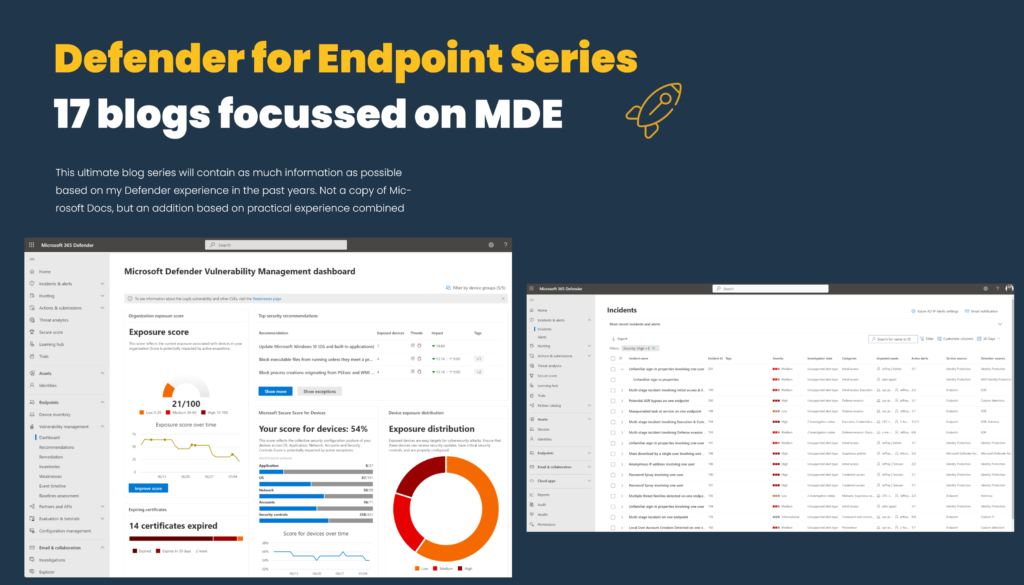Automatic attack disruption in Microsoft Defender XDR and containing users during Human-operated Attacks
Microsoft announced last year a new feature with the name; Automatic Attack Disruption in Defender XDR (Microsoft 365 Defender). Since October last year, Microsoft expanded the Automatic attack disruption feature with the support of human-operated attacks and the ability of…
How to use deception in Microsoft Defender for Endpoint/ Defender XDR
Microsoft Defender XDR is expanding in the full attack stage. With the new Deception capability in Microsoft Defender XDR, it is possible to detect attackers early in the kill chain and disrupt advanced attacks. Deception is a new feature for…
Common mistakes during Microsoft Defender for Endpoint deployments
Microsoft Defender for Endpoint (MDE) is part of Microsoft Defender XDR and can be deployed via multiple configurations. During my experience with the product, I deployed/ reviewed and evaluated many Defender for Endpoint instances and configured new instances for many…
How to use Automatic Attack Disruption in Microsoft 365 Defender (BEC, AiTM & HumOR)
Last year Microsoft announced a new feature called; Automatic attack disruption which uses correlated insights from the Microsoft 365 ecosystem and powerful AI models to stop sophisticated attack techniques while the attack is in progress. Automatic attack disruption supports the…
How to troubleshoot Live Response in Defender for Endpoint
Live Response is a powerful feature as part of the Microsoft 365 Defender portal. With the use of Live Response Security Operations Teams can establish a remote session to collect more files/ or forensic evidence/ run scripts remotely. With the…
Onboard and configure Defender for Endpoint for non-persistent VDI environments
Microsoft supports multiple onboardings methods for Defender for Endpoint. For non-persistent VDI’s there is always a challenge since non-persistent VDI’s are working differently in comparison with typical endpoints. For Defender for Endpoint, there is a challenge during the onboarding and…
Block apps (discovered/ shadow IT) with Defender for Cloud Apps and Defender for Endpoint
With the use of Defender for Cloud Apps in combination with Defender for Endpoint it is possible to block unsanctioned apps, the block of apps is possible based on discovered applications. Blog information:Blog published: July 26, 2023Blog latest updated: July…
Manage Defender for Endpoint for Windows, macOS, and Linux via Security settings management
Recently Microsoft announced a couple of new improvements related to the new security settings management for Windows, macOS, and Linux as part of Defender for Endpoint. In the past years, there was always a bit of a cap between the…
AiTM/ MFA phishing attacks in combination with “new” Microsoft protections (2024 edition)
Adversary-in-the-middle phishing attacks are still more common in use. Since the removal of basic authentication from Exchange Online more and more attackers are using more modern attacks like adversary-in-the-middle phishing, cookie theft, QR code phishing, and other used attacks. Last…
Onboard Defender for Endpoint without Azure Arc via Direct onboarding
Previously, onboarding hybrid servers to Defender for Servers with MDE required Azure Arc as a pre-requisite for the deployment. Since the standalone plan was removed from the licensing options some time ago (for CSP customers without EA agreement). Azure Arc…



